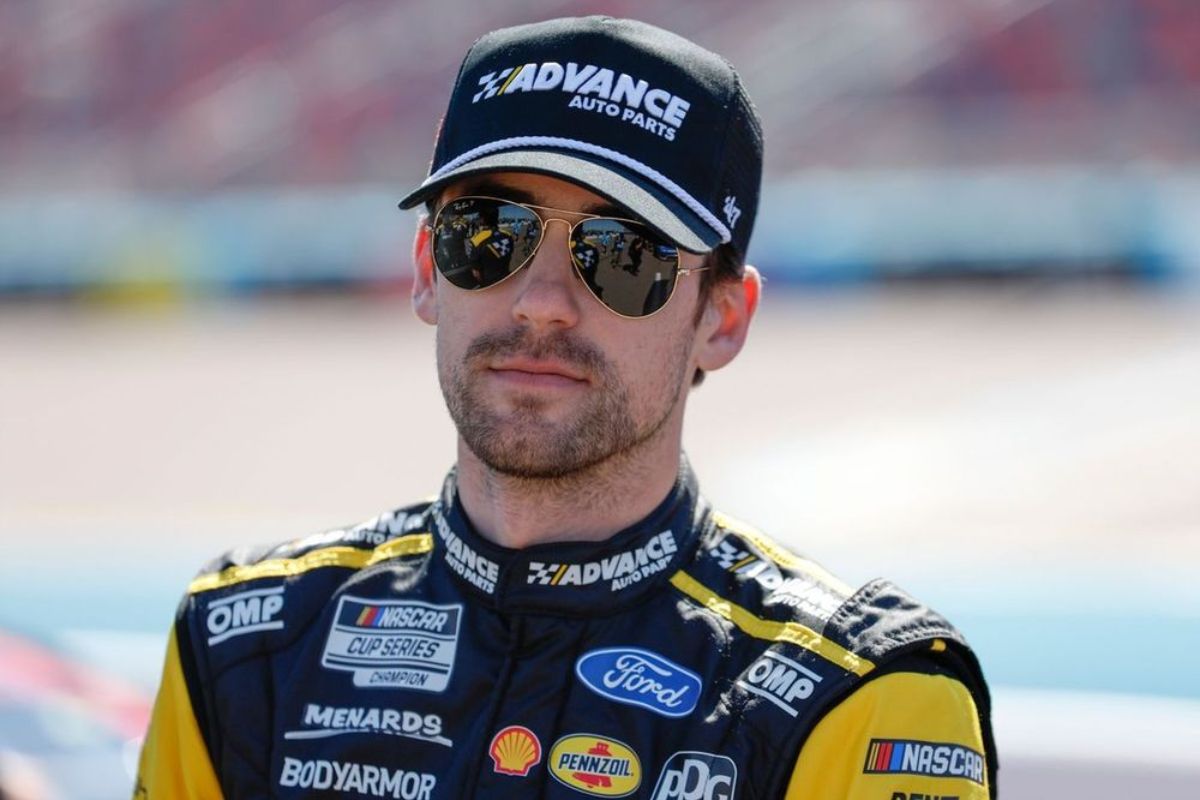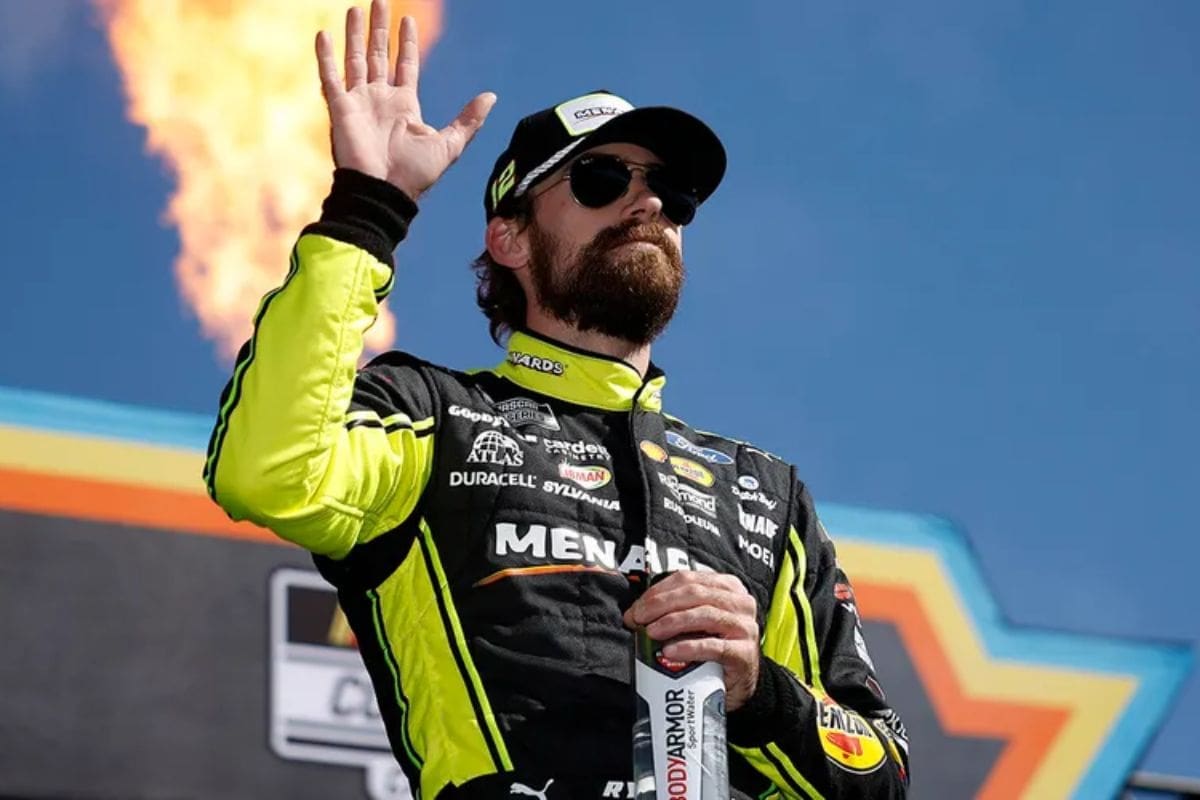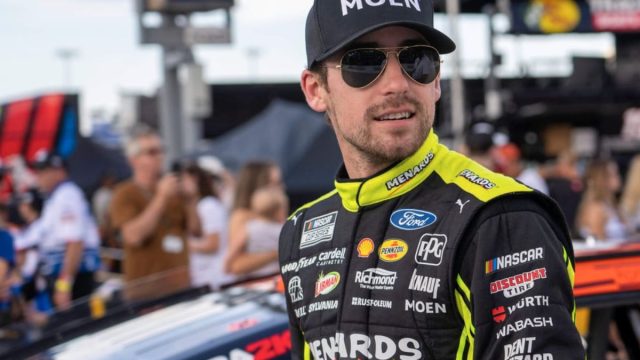Fans Call Out Ryan Blaney: In the wake of the Goodyear 400, a controversy has enveloped NASCAR, centered on Ryan Blaney‘s contentious action that precipitated William Byron’s public displeasure. This incident has not only reignited debates about sportsmanship and professionalism within motorsports but has also prompted a broader discourse on the responsibilities of high-profile athletes in maintaining the decorum of their respective sports.
Key Takeaways
- Fans criticized Ryan Blaney for his aggressive actions towards William Byron, which escalated tensions on the track.
- Some supporters expressed disappointment over Blaney’s perceived lack of professionalism during the race.
- The incident sparked a flurry of social media activity, with fans creating memes and discussing the feud extensively.
- Concerns were raised about the potential impact of Blaney’s actions on his reputation and future in NASCAR.
- Despite criticism, a segment of fans showed support for Blaney’s emotional authenticity and passion for racing.
Ryan Blaney’s Early Exit at the Goodyear 400
Ryan Blaney’s participation in the Goodyear 400 was prematurely terminated following a collision involving William Byron and Martin Truex Jr, which forced his No. 12 Ford Mustang into the outside wall during a mid-stage restart. The incident not only sidelined Blaney but also highlighted the complexities of mid-race strategic positioning and the narrow margins for error in NASCAR racing.
The sequence leading to the collision was a result of navigating typical of the tightly contested mid-stage laps. As drivers jockeyed for advantageous positions, Blaney, running close behind Byron and Truex, found himself in a precarious situation. The dynamics of drafting at Darlington Raceway, coupled with the aggressive push from the trailing cars, created a scenario ripe for contact. Byron and Truex, absorbed in their tussle, perhaps underestimated the spatial constraints of the track’s notorious turns.
Analyzing the incident, it’s evident that spatial awareness and timing are critical, especially during restarts when the field is bunched together. The aerodynamics of closely packed cars can lead to unexpected movements, and a slight miscalculation or delayed reaction can escalate into a multi-car incident. This early exit not only impacted Blaney’s standing in the race but also had broader implications for his season’s strategy and points accumulation.

Blaney’s Reaction and Radio Communication
Overwhelmed by the circumstances of the crash, Blaney’s immediate reaction was captured through his team’s radio communications, where he vehemently expressed his displeasure towards Byron and Truex Jr. His response not only mirrored his emotional state but also highlighted the high tensions often prevalent in competitive racing environments. The intensity of his words on the radio provided a raw insight into the immediate psychological impact of racing incidents on a driver.
"I'm gonna go kill both those mother f***ers is what I'm gonna do."
Ryan Blaney
— Jordan Bianchi (@Jordan_Bianchi) May 12, 2024
Blaney’s attempt to intentionally wreck Byron’s No. 24 car as they came off pit road further complicates the narrative. This action, captured and replayed across different media, showcases a moment of clear retaliatory intent which might be seen as crossing the ethical boundaries of the sport. Such behavior invites scrutiny regarding the professionalism expected within NASCAR’s elite ranks.
This incident opens up broader discussions about the challenges drivers face and the fine line they tread between aggressive racing and maintaining professional decorum. The radio communications serve not just as a vent for frustration but as a window into the split-second decisions made under high stress, often with significant repercussions.
William Byron’s Perspective
Despite finishing the race in sixth place, William Byron maintained that he had been ahead of the other cars and did not deliberately cause the crash early in the event. Byron’s perspective is essential in understanding the dynamics of the race and the incident that followed. His clarification sheds light on his strategic positioning and intent, which, according to him, was not aligned with causing disruption.
“I felt like I was ahead of them, and the exit is really narrow right there. I was surprised I was even in that spot. I felt like I would never got to the bottom of three wide there, but the lane was there into 1 and my car turned really good, and I got almost clear of Martin and then, and hate that, that happened. I don’t want to crash especially that early in the race.” byron
- Pre-race Strategy: Byron’s approach to the race was likely influenced by a well-considered strategy focusing on positioning rather than aggressive tactics. This intentionality is often overshadowed in the chaotic moments of a race but is vital for evaluating driver behavior.
- Spatial Awareness: As a professional driver, Byron’s spatial awareness is tuned to understand his relative position on the track. His assertion of being ahead suggests a calculated move, positioned within the legal and competitive boundaries of racing.
- Race Dynamics: Early in the race, drivers are settling into their rhythms. Byron’s claim of not causing the crash intentionally points to the complex interplay of high speeds, close quarters, and the inherent unpredictability of racing dynamics.
- Driver Accountability: Byron’s immediate response post-race indicates a level of accountability and a desire to clarify his role in the incident. This openness is often appreciated among peers and spectators alike, as it provides transparency and fosters a fair competitive environment.

Blaney’s Season Performance and Fan Reaction
Shifting our focus to Blaney’s performance as a whole this season, it is worth mentioning that, although leading Ford drivers in points, he has not secured a victory in the 2024 NASCAR Cup Series. This comparison highlights a peculiar narrative: dominance in consistency but a stark absence in peak performance achievements. Blaney’s season is a confirmation of strategic racing and accruing points through reliable finishes, yet it raises questions about the tactical expertise required during critical phases of races which dictate outright wins.
Analyzing Blaney’s approach, one notices a pattern of safe, calculated risks. This method ensures steady accumulation of points but perhaps lacks the aggressive tactics typically seen from race winners. The strategy is sound for long-term championship competitiveness, but it might be contributing to the absence of victories. Such a scenario emphasizes the complexity of NASCAR strategy, where the balance between risk and reward must be finely tuned.
Moreover, Blaney’s performance curve suggests an adeptness at maintaining top-tier placements, demonstrating his skill and the effectiveness of his team’s race-day strategies. However, the lack of wins could potentially be a psychological barrier that impacts not only the driver but the morale of the entire team.
Fan Reactions to Blaney’s Actions
Responding to Ryan Blaney’s recent on-track behavior, fans expressed a mixture of critique and amusement across different social media platforms. The incident, involving a heated exchange and an apparent attempt at retaliation against William Byron, sparked a wide array of reactions highlighting the complexity of personal relationships within the sport.
“So basically he’s going to do nothing”.
“Blaney the biggest damn baby in all of racing”.
“Bro gonna kill the guy dating his sister”.- fans reaction
- Evidence of Professionalism: Many fans voiced concerns over Blaney’s professionalism, arguing that such behavior sets a poor example for younger spectators and tarnishes the sportsmanlike image expected in NASCAR. They stressed the importance of maintaining composure, regardless of personal connections or emotional triggers on the track.
- Amusement at the Situation: On the lighter side, some fans found humor in the predicament, particularly the irony of the feud given Blaney’s personal connection to Byron through his sister. Memes and jokes proliferated, highlighting the soap opera-like drama that sometimes unfolds in motorsports.
- Emphasize: A significant number of responses included warnings about the potential long-term consequences of such actions. Fans speculated about possible sanctions from NASCAR and the impact on Blaney’s reputation and career, advising him to tread carefully in future competitions.
- Support for Emotional Expression: Conversely, a segment of the fanbase applauded Blaney for showing genuine emotion, arguing that it reflects his passion for racing and authenticity, which can be invigorating in a highly commercialized sport.

News in Brief: Fans Call Out Ryan Blaney
The recent incident involving Ryan Blaney at the Goodyear 400 has ignited significant scrutiny regarding his conduct and decision-making on the track.
This event not only raises questions about professional responsibilities and sportsmanship in NASCAR but also impacts perceptions of Blaney’s character and strategic approach to racing.
Reflecting on and possibly adjusting these behaviors may be crucial for Blaney to restore his reputation and guarantee the integrity of the sport is upheld among fans and fellow competitors equally.
Our Reader’s Queries
Q: Who won the race today at Darlington Raceway?
A: Brad Keselowski ends 110-race dry spell with thrilling Darlington victory, reigniting NASCAR excitement at Darlington Raceway.
Q: Who owns the 12 car in NASCAR?
A: Ryan Blaney commands the wheel of the No. 12 Team Penske Ford Mustang, marking his sixth consecutive full season under the ownership of the esteemed Roger Penske.
Also Read: NASCAR Drivers’ Practice Secrets Revealed by Ryan Blaney
